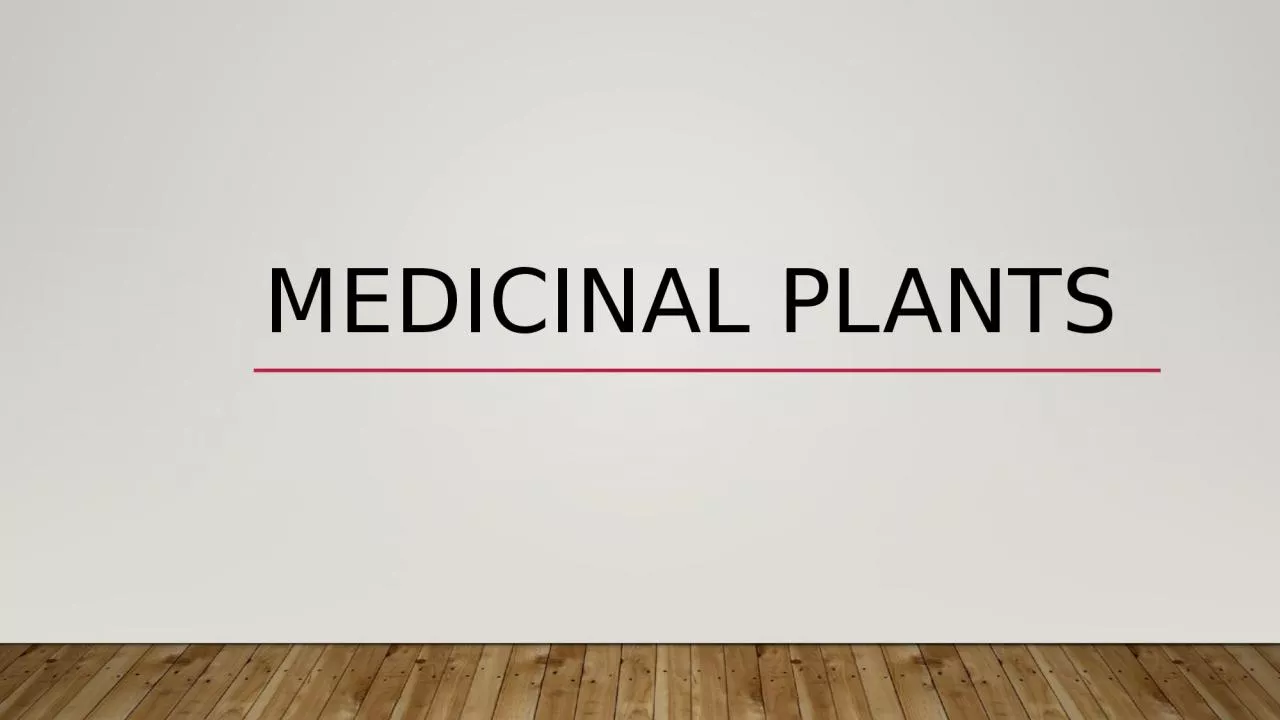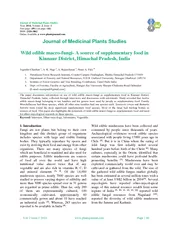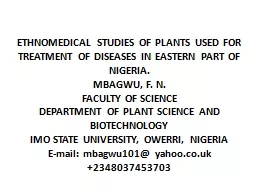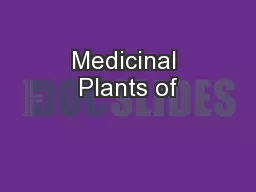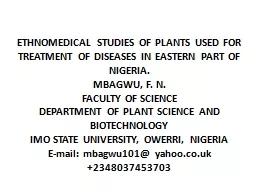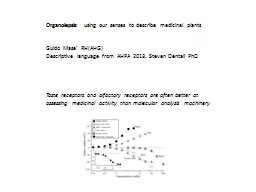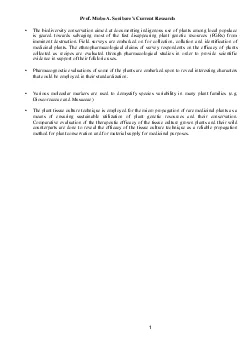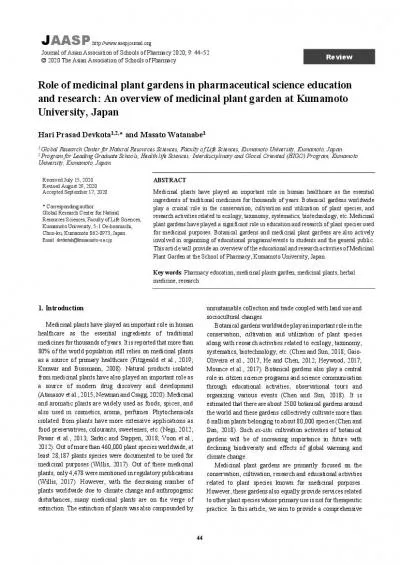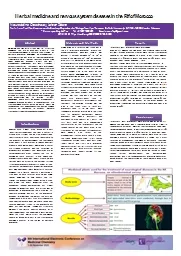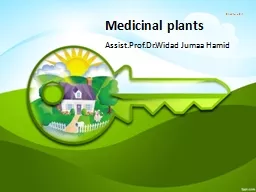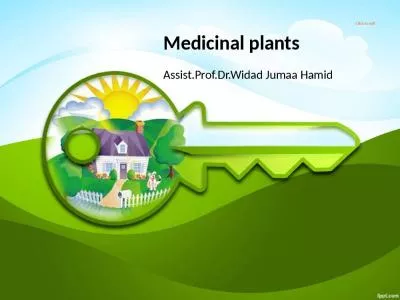PPT-Medicinal plants 1. OCIMUM TENUIFLORUM
Author : jaena | Published Date : 2023-10-30
Synonym Ocimum sanctum English names Holy basil Indian names Tulsi Surasa Family Lamiaceae Morphology Tulsi is an erect much branched subshrub 3060 cm
Presentation Embed Code
Download Presentation
Download Presentation The PPT/PDF document "Medicinal plants 1. OCIMUM TENUIFLOR..." is the property of its rightful owner. Permission is granted to download and print the materials on this website for personal, non-commercial use only, and to display it on your personal computer provided you do not modify the materials and that you retain all copyright notices contained in the materials. By downloading content from our website, you accept the terms of this agreement.
Medicinal plants 1. OCIMUM TENUIFLORUM: Transcript
Download Rules Of Document
"Medicinal plants 1. OCIMUM TENUIFLORUM"The content belongs to its owner. You may download and print it for personal use, without modification, and keep all copyright notices. By downloading, you agree to these terms.
Related Documents

